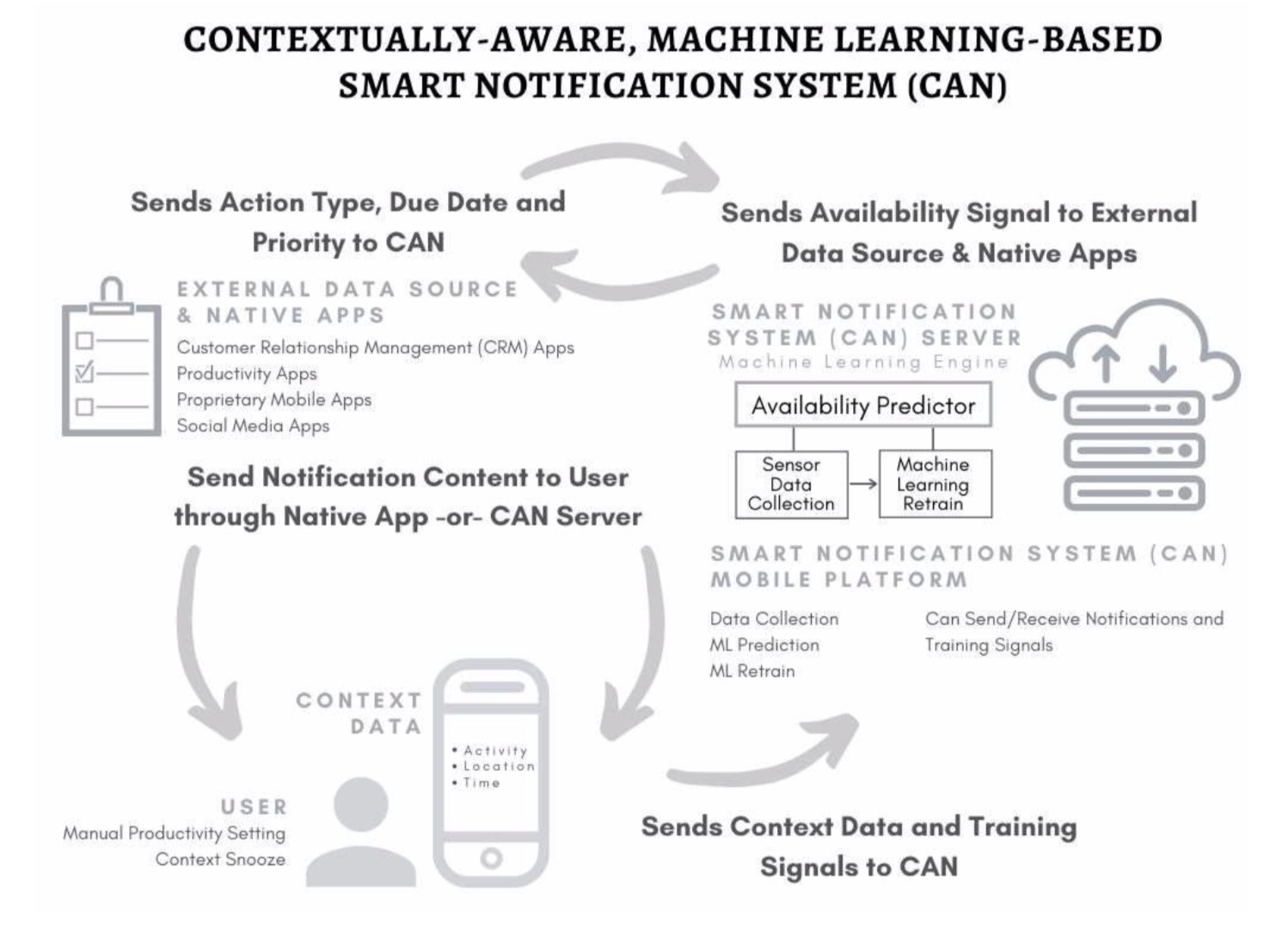This unique notification system enhances productivity and reduces user stress by providing notifications at the precise moment that users are able to act upon the task. Using machine learning (ML), researchers at Georgia Tech, have created a system that uses three types of inputs to present reminders and information to users in the right way and at the right time.
Reminders are categorized as specific calls to action such as “think about,” “research,” “execute,” or “communicate,” while a “productivity dial” allows the user to indicate their current availability to be productive. Setting a low productivity number reduces their number of notifications, allowing only the highest priorities to come through, while setting a higher productivity number, indicating they are eager to handle tasks, increases the number of notifications they receive. This productivity setting is controlled automatically by biometrics (e.g., a smart watch) or data sources (e.g., an online calendar), or it can be set manually.
If the user is unable to tackle a task immediately, the system uses ML to tap into their past behavior to enable a unique smart-snooze feature. This allows them to reschedule notifications using future contexts, such as their proximity to other people. User context is collected via smartphone sensor data to characterize their current activity, cognitive state, and interruptibility. The ML engine predicts the next best time to send a particular notification based on the user’s context and what needs to be done.
- Increases user efficiency
- Increases user productivity
- Reduces user stress
- Business-to-business (B2B) add-on applications to increase business efficiencies within existing email, channel-based messaging (e.g., Slack), or customer relationship management (e.g., Salesforce) systems
- Business-to-consumer (B2C) applications related to marketing to send consumers notifications at the exact moment they are available to purchase
- Any consumer or enterprise product that includes notifications or messaging as a feature of the service/application
Current notification systems are either synchronous (meaning notifications are received as soon as they are sent) or time-based, with the sender having the responsibility of choosing the recipient’s optimal time of receipt. (Reminder notifications are strictly time-based.) The problem with time-based notifications is that the time chosen may or may not be the right time for that user to act upon the reminder. Georgia Tech’s system lets senders relay tasks, information, etc., and have the notification received when the recipient is ready to act on or respond to it.

